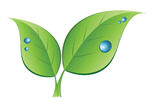In a 2020 McKinsey US consumer sentiment survey, more than 60 percent of respondents said they’d pay more for a product with sustainable packaging. A recent study by NielsenIQ found that 78 percent of US consumers say that a sustainable lifestyle is important to them.
With the rising demand for sustainable products comes a rising demand for green cleaning services. If we offer this service, we need to make sure that we’re offering the clients of our green cleaning services the very best eco cleaners.
Assessing the environmental impact of cleaning products can be daunting. Despite being touted as containing green tea, coconut, and lavender oil, the list of ingredients in commercial cleaners— even those claiming to be green — is often filled with unrecognizable ingredients.
Despite the Federal Trade Commission’s warning against unfounded environmental claims, the government has made little progress in aiding consumers to differentiate between products. Cleaning products lack a system like the nutritional information box accompanying packaged foods. Companies are not mandated to disclose all ingredients in cleaning products, and many choose not to.
Assessing cleaning products for environmental impact
If you aim to stay safe while meeting your client’s expectations for green cleaning services, consider these steps:
Look for third-party certification
EcoLogo and Green Seal are two leading certifications for cleaning products. The Canadian government created the former which is now owned by the Illinois-based company UL, while the latter is managed by the Washington-based nonprofit group Green Seal.
If you’re willing to do some pre-purchase homework, the EPA’s Greener Products guide on their website is another useful resource. Here’s some of their label and certification recommendations:
From UL’s EcoLogo website, here is a list of pages you may want to check out
For these certifications, the product’s efficiency is first tested through industry-standard cleaning tests. Manufacturers must disclose all ingredients and their sources. The product must also show minimal effects on laboratory animals after ingestion, inhalation, or skin exposure.
They also test a product’s impact on the environment and nonhuman life. It cannot be toxic to algae or fish, and it must be biodegradable. Phosphorous limits are in place due to their potential to cause algal blooms, which can deplete oxygen levels in aquatic environments. Green Seal upholds California’s strict standards for volatile organic compounds. The packaging must be recyclable and should not introduce heavy metals into the product.
To underscore the significance of its standards, Green Seal carried out a life cycle assessment, demonstrating that certified cleaning products outperform non-certified counterparts.
Criticisms of third-party certification relate to the fact that manufacturers pay for the privilege of bearing their seals, potentially leading to influence. Despite the fees, which for Green Seal can range from $2,800 to $9,500, the assessment process is not biased as the fee isn’t dependent on success.
However, the certifications don’t provide a rating system to differentiate among certified products. This poses a challenge as certifications are still relatively rare, with fewer than 10 household cleaning products carrying the Green Seal stamp, and only a slightly higher number boasting EcoLogo certification.
Check ingredients
In the absence of green-certified cleaning products or reliable retailers, consumers must revert to ingredient checking. Although this is far from ideal and often not entirely effective, it’s better than doing nothing.
Learn more
If you want to learn more about starting a house cleaning business, check out our comprehensive guide on starting a successful house cleaning business. We cover everything you need to know to start and run a thriving cleaning service.
